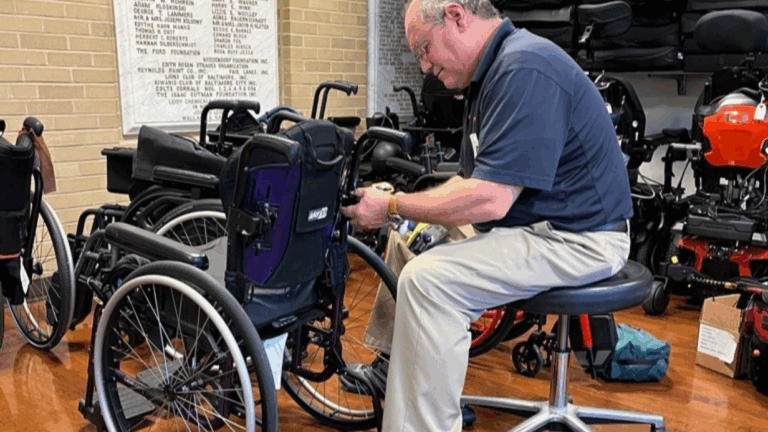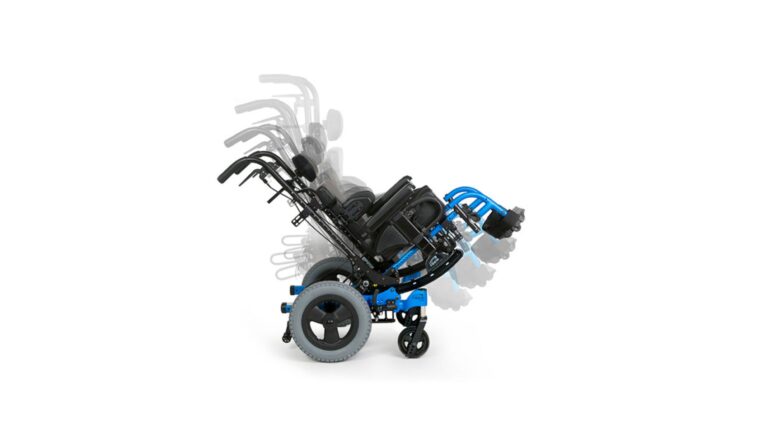In the confusing world of durable medical equipment, many pieces of equipment are labeled “wheelchair.” But, not all manual wheelchairs are equal.
Manual wheelchairs are categorized by these codes:
- K0001s are standard, depot-style wheelchairs weighing 36 pounds or greater
- K0002s are the same wheelchairs two inches lower to the ground
- K0003s are “lightweight” wheelchairs weighing less than 36 pounds with minimal adjustments
- K0004s are “high strength lightweight wheelchairs” weighing less than 34 pounds and minimally customizable
- K0005s are “ultra lightweight manual wheelchairs” that weigh less than 30 pounds and have an adjustable seat and back height, adjustable axle, and can have tilted rear wheels
Significant advancements have been made in wheelchair manufacturing and material quality.
However, depot or lightweight wheelchairs (K0001-K0003) have no minimum Medicare or accrediting body requirements to meet and therefore manufacturers have minimal incentive to improve quality, comfort and functionality.
Ultra lightweight manual wheelchairs meet or exceed the rigorous standards of the Rehabilitation Engineering and Assistive Technology Society of North America (RESNA) for stability, dimensions and expected life. However, since they are more expensive, many insurers often only cover cheaper “depot-quality” wheelchairs without explicit and extensive justification. Most will also expect the user to maintain any wheelchair for at least five years. Depot-level wheelchairs will not last that long if used daily.
Ultra lightweight manual wheelchairs are made of more durable materials, such as aerospace grade aluminum, and superior components. Ultra lightweight manual wheelchairs last significantly longer and are more cost-effective for a full-time wheelchair user. They consume less energy and push at faster speeds when compared to depot wheelchairs (PVACSCM, 2005). An ultra lightweight manual wheelchair allows providers to choose:
- front and rear seat height
- seat width and depth
- frame angles
- components (such as specific wheels)
- rear wheel camber
- vertical and horizontal rear wheel position
Rear wheel placement is of utmost importance. If a rear wheel is not in the optimal position, it will negatively impact propulsion mechanics, increasing the frequency of strokes and force required. This increases the risk of repetitive strain injury, pain, and upper extremity dysfunction. When the rear wheel is more forward, the shoulder experiences less internal rotation, increased push angles, increased push rim access, decreased rolling resistance, decreased force required, decreased propulsion frequency and increased over-all efficiency. Ultra lightweight manual wheelchairs’ adjustable axle allows the clinician to orient the user’s rear seat height low enough for full wheel access, but high enough to avoid harmful shoulder angles. Reducing distance between the rear wheel axle and shoulder increases access to the hand rim, push angle, and contact time.
These lessen required repetitive motions. When the wheelchair user is seated in the wheelchair with hands at the top of the push rim, it is recommended the forearm to upper arm angle should be between 100 and 120 degrees. This position enables optimal wheel access, upper extremity biomechanics, and cardiopulmonary efficiency.
Wheelchair users of all ages will benefit from an ultra lightweight manual wheelchair. 37% of manual wheelchair users are of working age (Liu et al., 2010). The Paralyzed Veterans of America Consortium for Spinal Cord Medicine (2005) cites a positive correlation between upper limb pain and unemployment. One to two thirds of full-time manual wheelchair users report upper extremity pain. It is imperative that providers mindfully prescribe the lightest weight and most protective wheelchair. Equally, Clinicians should avoid the misconception that those who are elderly or have progressive diseases such as multiple sclerosis should not receive more expensive wheelchairs. Upper extremity pathologies only hasten the path to dependence on more costly powered mobility.
Studies state that pain is associated with low quality of life scores and the reason for declines in function and independence with self-care skills (PVACSCM, 2005). Over 1 million Americans utilize a manual wheelchair for their primary mode of mobility (Liu et al., 2010). Considering the impact of pain on independence and quality of life, it is imperative to be fully informed of the benefits of the prescription of ultra lightweight manual wheelchairs.
Not all wheelchairs are equal in function and purpose. A wheelchair user’s clinical team is responsible for aligning the user’s needs with appropriate equipment to promote maximal independence and minimize impairments.

author
Alexis Rush
OTR/L, ATP
Alexis Rush is an Assistive Technology Professional specializing in equipment for persons with spinal cord and brain injuries. She graduated from Xavier University with a degree in occupational therapy in 2003 and has her Doctor of Occupational Therapy from the University of St. Augustine. As a therapist, Alexis specialized in acute adult neurologic injury but also worked as a pediatric home health occupational therapist. She now works as a wheelchair provider at a large rehabilitation hospital in Denver, Colorado. Alexis is a mountain sports lover and an avid world explorer.
References
DiGiovine, C., Rosen, L., Berner, T., Betz, K., Roesler, T., & Schmeler, M. (2012). RESNA position on the application of ultralight manual wheelchairs (Position Paper).
Gebrosky, B., Pearlman, J., Cooper, R.A., Cooper, R., & Kelleher, A. (2013). Evaluation of lightweight wheelchairs using ANSI/RESNA testing standards. Journal of Rehabilitation Research and Development, 50(10), 1373-1389.
Liu, H. Y., Hong, E. K., Wang, H., & Salatin, B. (2010). Evaluation of aluminum ultralight rigid wheelchairs versus other ultralight wheelchairs using ANSI/RESNA standards. Journal of Rehabilitation Research and Development, 47(5), 441-455.
Myaskovsky, L., Gao, S., Hausmann, L. R., Bornemann, K. R., Burkitt, K. H., Switzer, G. E., … & Worobey, L. (2017). Quality and equity in wheelchairs used by veterans. Archives of physical medicine and rehabilitation, 98(3), 442-449.
Paralyzed Veterans of America Consortium for Spinal Cord Medicine (PVACSCM). (2005). Preservation of upper limb function following spinal cord injury: A clinical practice guideline for health-care professionals. The Journal of Spinal Cord Medicine, 28(5), 433-470.



